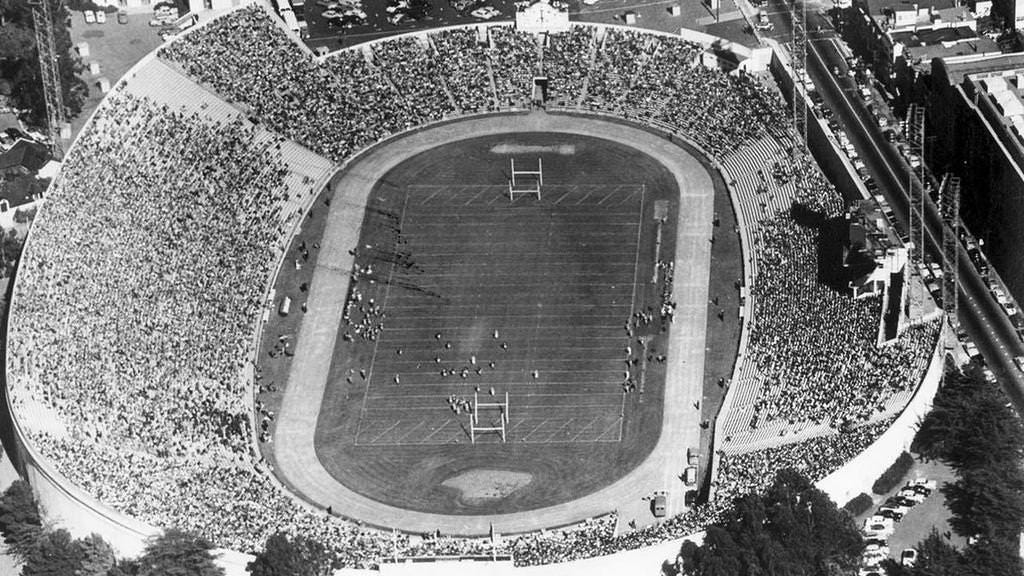Dualing Goal Posts
Unless you are Canadian or an American over 45, your entire life has been lived during a time when every goal post knew its place: on the end line. It wasn't always so. Many of us lived in a world where goal posts stood over the goal line, the end line, or both.
The uprights stood on the goal lines from the game's beginning until the college rules committee moved them to the end lines in 1927. Justified for safety reasons, they also wanted to make extra points more challenging when many wanted to get rid of the extra point altogether.
In 1927, the high schools and pros used the college rule book, so the goal posts stepped back ten yards in every stadium. However, things changed in 1933 when the NFL created its own rule book. In doing so, they returned the goal posts to the goal line, where they stayed until 1974. At that point, the pros decided soccer-style kickers had put too much foot into football, and the pros joined the rest, placing their goal posts on the end line.
However, before the NFL returned their posts to the end, the colleges encouraged more field goal attempts by widening the uprights to 24 feet (outside width). (They decided on 24 feet since that was the length of the longest available 2 x 4). America's high schools waited until 1971 to match the college width, only to see the NCAA return to its former width twenty years later.
The following chart shows the specs at three levels of football -high school, college, and pro. The three levels have not agreed with one another for ninety years.

The use of shared stadiums means there have been thousands of instances in which high school teams played on college fields, college teams on high school or professional fields, and pro teams on college fields. So, how did the stadiums and rule makers handle the conflicting standards?
The most common approach was to do nothing, which worked for high school and college teams because the goal post location did not conflict, only the upright width. (The high school rules allowed for the use of college goal posts.) Likewise, a 1954 Redskins-Packers exhibition game at NC State's Riddick Stadium used the college goal posts based on an agreement between the coaches.
Another option for the high school-college conflict was to install units with adjustable uprights. Others planted their goal posts in sleeves and swapped the units as needed. This became the standard process from 1933 through 1970 where college and pro teams regularly shared the same field.
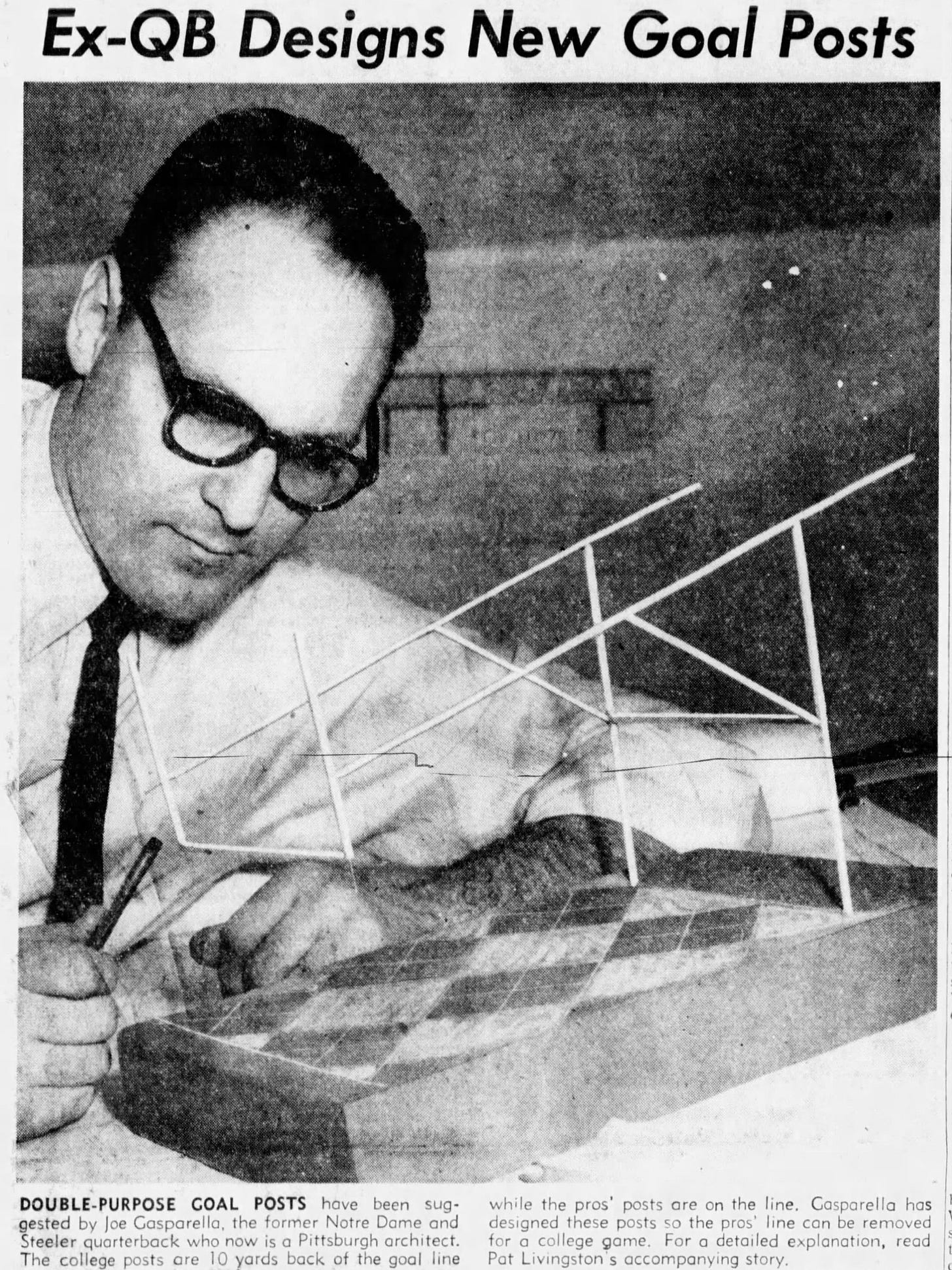
Despite most locations making adjustments, there were at least a handful of games played with both pro and college goals posts on the field. It happened at least once when San Francisco's Kezar Stadium hosted the 49ers, as seen on the cover of a book by the 49ers' publicity director.
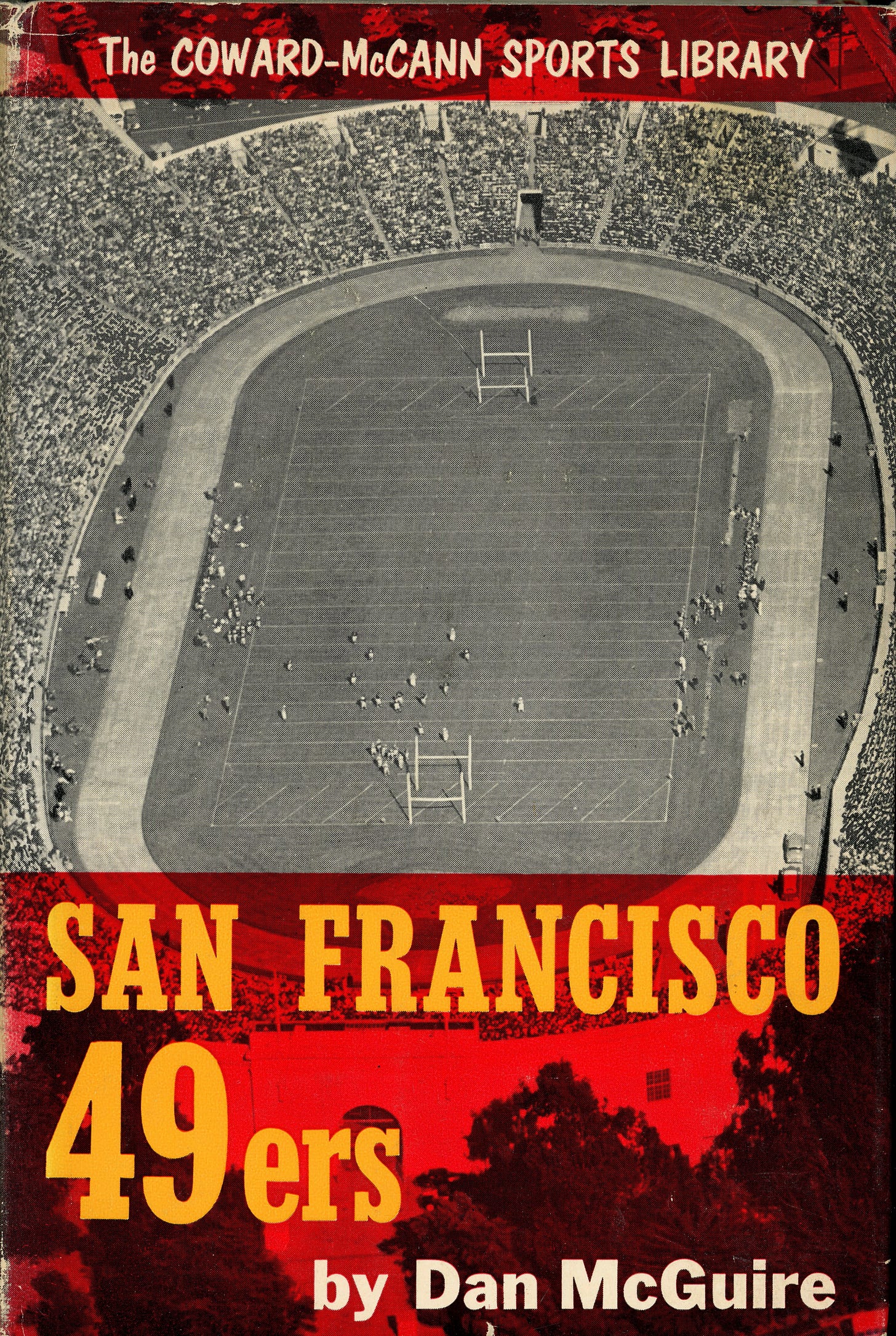
Kezar was the 49ers' home from 1946 to 1970 and hosted several college and high school teams. Although my research failed to find additional information about Kezar's dual goal posts, it did locate an uncropped version of the picture on the book cover. Other images and videos of the 49ers playing in Kezar during the late 1950s show the college goal posts removed from the end line, so the dual goal post image may have been a one-time event resulting from a quick turnaround between college and pro games.
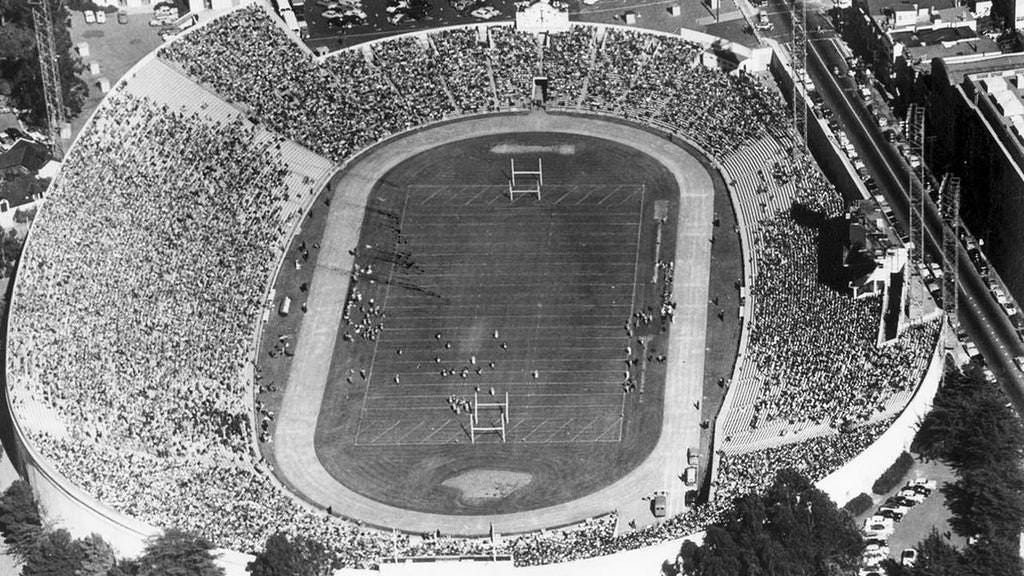
A second situation leading to dual goal posts came when pros teams played at fields that typically hosted college games. Fans in the 1950s regularly tore down goal posts, so many stadiums embedded the posts in cement to discourage that practice. That led to problems when NFL teams played exhibition games at college facilities in non-NFL cities. Such was the case when the Lions and Redskins played at Birmingham's Legion Field in 1957. The college goal posts stayed in place, supplemented by the pro version.
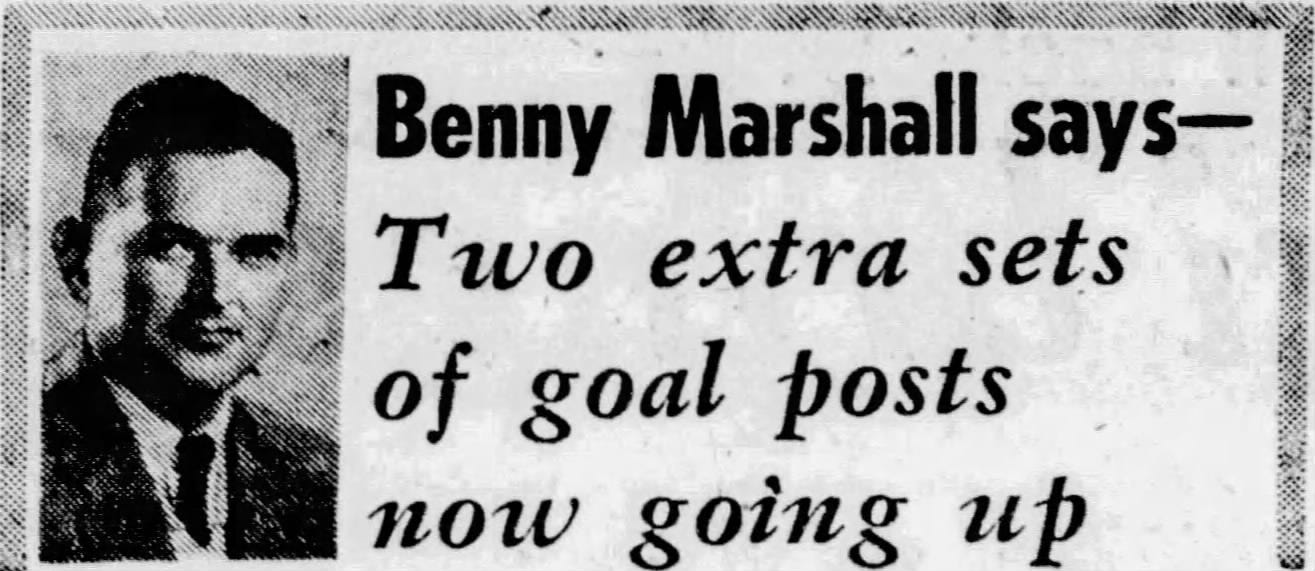
Likewise, the Boston Patriots played an exhibition game at Harvard Stadium in 1960 with multiple goal posts. The thought of dual goal posts so sickened Francis Rosa, a Boston Globe writer, that he opened an article about it, saying, "Harvard Stadium will have a grotesque look for next Sunday's pro football game: four sets of goal posts."
Dual goal posts also stood for the 1963 and 1964 Corpus Cristi Challenges, a college all-star game played under professional rules, but images of that setup were also unavailable.
Unfortunately, the story ends there. While there is documentation of multiple goal post fields for a handful of games, there likely were other instances. Perhaps folks were embarrassed by the "grotesque" goal posts and chose not to talk or write about them.
Nevertheless, please provide links or other documentation in the comments if you know of other locations or situations with dual goal posts.
Postscript (May 30, 2023)
Here’s a field goal attempt with an NFL kicker booting the ball at dual-goal posts.
https://twitter.com/NFL_Journal/status/1663417084682948609
Football Archaeology is reader-supported. Click here to buy one of my books or otherwise support the site.


